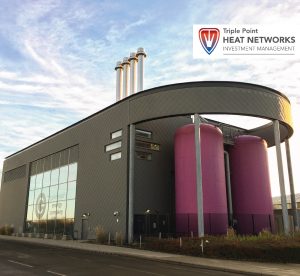Last month, the Minister for Energy Security and Net Zero visited a project in Gateshead that received almost £6 million of funding from the Heat Networks Investment Project (HNIP). The project is a great example of heat network versatility and the potential opportunities for harnessing renewable and low carbon heat for homes, businesses and other buildings across the country.

In Gateshead, a geothermal system extracts underground heat reserves from abandoned mineworking. A water source heat pump utilises water from old, flooded mines 150 metres below the town centre, harnessing its heat energy and sleeving this to homes and buildings in the area. The system then returns the water back to the mine to be reheated, ready for the process to repeat. The project has progressed rapidly since it began construction in June 2021, providing low carbon sustainable heating to 350 homes, public and private offices, a college and an arts centre. The network provides up to 50% of the heat required by those connected to the network, putting the council way ahead of the game in their ambition to be zero-carbon by 2030.
The innovative solution in Gateshead is just one example of where disused coalmines can be used in positive ways to help accelerate decarbonisation efforts, building on the legacy of the UK’s first industrial revolution towards a new green age revolution. As the UK shuts down coal production in favour of renewable and nuclear energy generation, research by the Ordnance Survey has highlighted that just over 6 million homes, and over 300,000 offices and businesses live above abandoned coalmines [1]. This demonstrates how a large proportion of buildings are living on top of an untapped renewable resource that can be harnessed to provide low carbon heating for generations to come. Over 60 local authorities have been identified by the Coal Authority and Ordnance Survey that could benefit from the geothermal energy provided by old coalmines [2].

These projects are also creating new green jobs in low carbon industries, opening opportunities in many sectors from engineering and financial procurement to community engagement and local development. The Heat Networks Industry Council estimates that the expansion of the UK’s heat network sector presents the largest investment opportunity in Europe, creating around 30,000 jobs across the UK [3].
Another project funded by GHNF in the South West of England plans to harness deep geothermal heating from hot granite rocks beneath Cornwall. The project aims to provide cheaper, low carbon heat in the next few years to a new 3,800-unit development, along with the existing Royal Cornwall Hospital, decarbonising our vital NHS facilities. Another geothermal project just east of Cornwall is now close to completion, harnessing energy from beneath the famous Eden Project, transforming a former clay mine to a stunning, zero carbon garden and visitor attraction.
Geothermal heating is just one of the plethora of technologies available to help decarbonise the way we heat our buildings, and GHNF is continuing to fund new innovative solutions that will help the UK reach Net Zero whilst providing cheaper, reliable, sustainable heating for occupants. In the most recent announcement, projects in the North of England were provided funding to harness waste heat created through industrial processes and waste management. One project in Bolton is set to extract heat energy through a combined sewer running through the town centre, and another in Hull East will utilise waste heat from a local industrial facility. The industry is continuing to innovate with new technologies being deployed to deliver efficient heating and hot water. Heat networks funded by GHNF are currently set to provide low cost, low carbon heating at scale to over 32,000 residents.
Heat networks have the potential to provide up to 20% of the UK’s heating provision, and it is projects like the one in Gateshead that highlight the sustainable heat sources hidden across the UK that can help to reduce reliance on fossil fuels and increase the country’s energy security. As energy bills increase, and focus on the climate becomes more crucial, the benefits unlocked by heat networks are needed more than ever.
Read more about some of the heat networks we’re supporting here: Some of Our Funded Projects – GHNF (tp-heatnetworks.org)
[1] Project explores potential demand for mine water heat
[2] Project explores potential demand for mine water heat
[3] The Heat Networks Industry Council
Notes to editors:
For all media enquiries, please contact: comms@tp-heatnetworks.org.
The Green Heat Network Fund (GHNF) is a multi-year, capital grant fund that opened to applicants in March 2022 and is anticipated to run to 2027. It will provide support to organisations in the public, private, and third sectors in England. The GHNF is a key part of plans to reduce carbon emissions from heating homes and businesses by 2050. It replaced the Heat Networks Investment Project (HNIP) scheme which closed for applications in January 2022. In contrast to the HNIP scheme, the GHNF scheme will only fund heat network projects where there is a low-carbon heat source.
For more information about Triple Point Heat Networks Investment Management, applying for GHNF support, successful projects under GHNF and HNIP, and BHIVE, visit: www.tp-heatnetworks.org.
A high-level summary of GHNF https://www.gov.uk/government/publications/green-heat-network-fund-ghnf
For further information about the scheme and to join the TP Heat Networks mailing list to receive updates, please contact us: enquiries@tp-heatnetworks.org.


